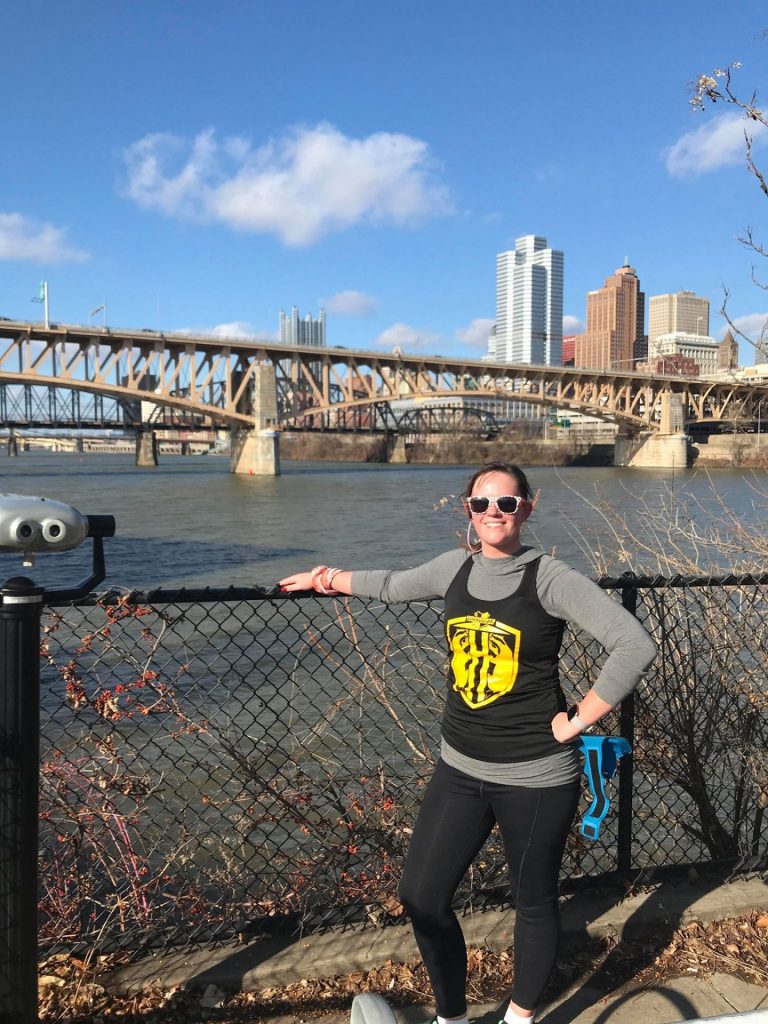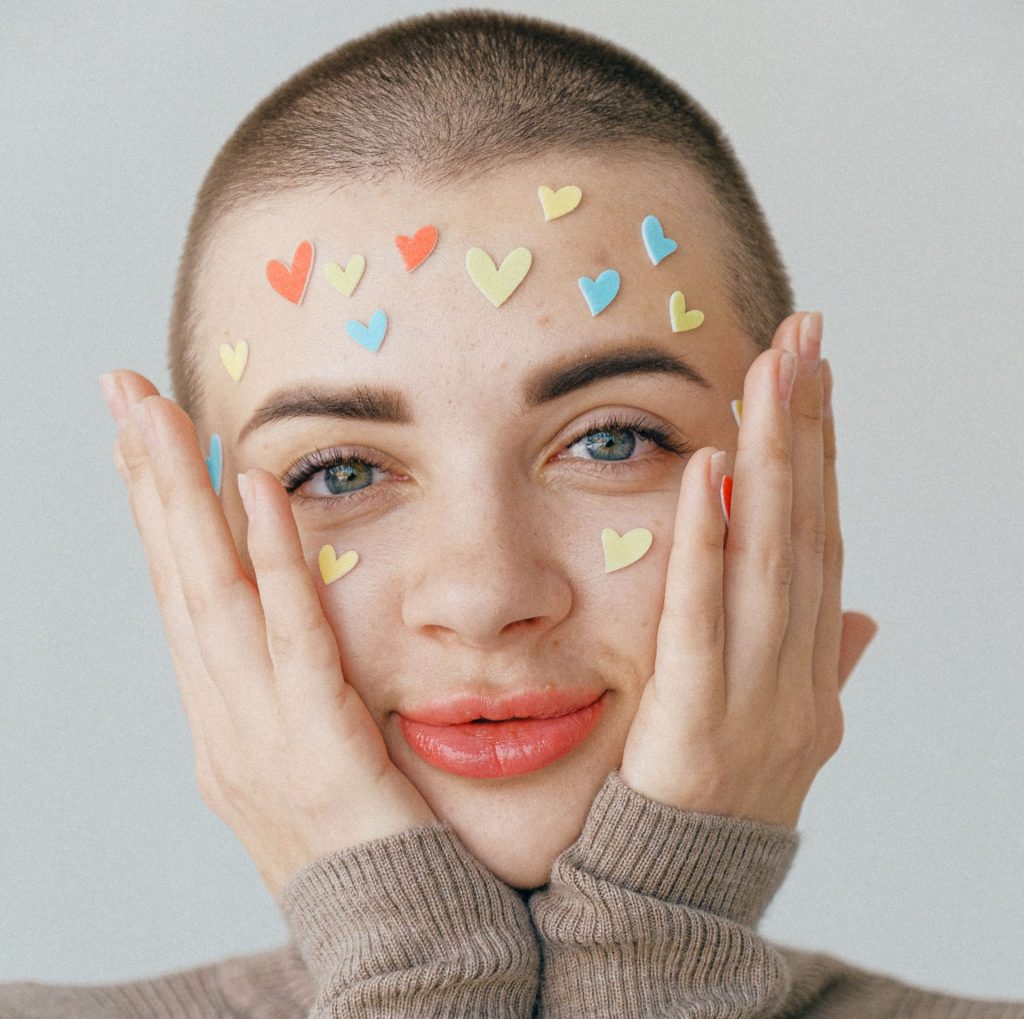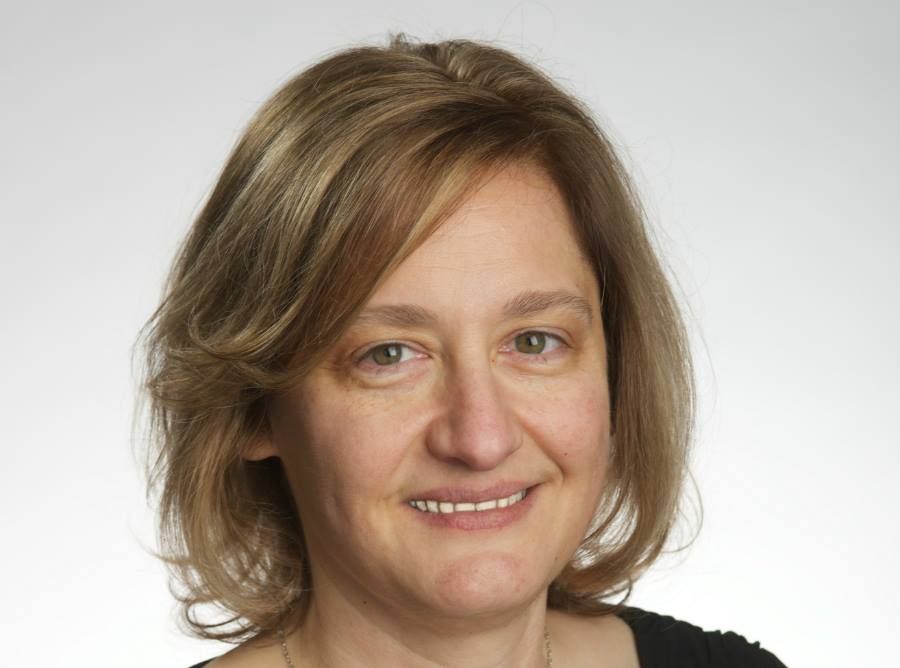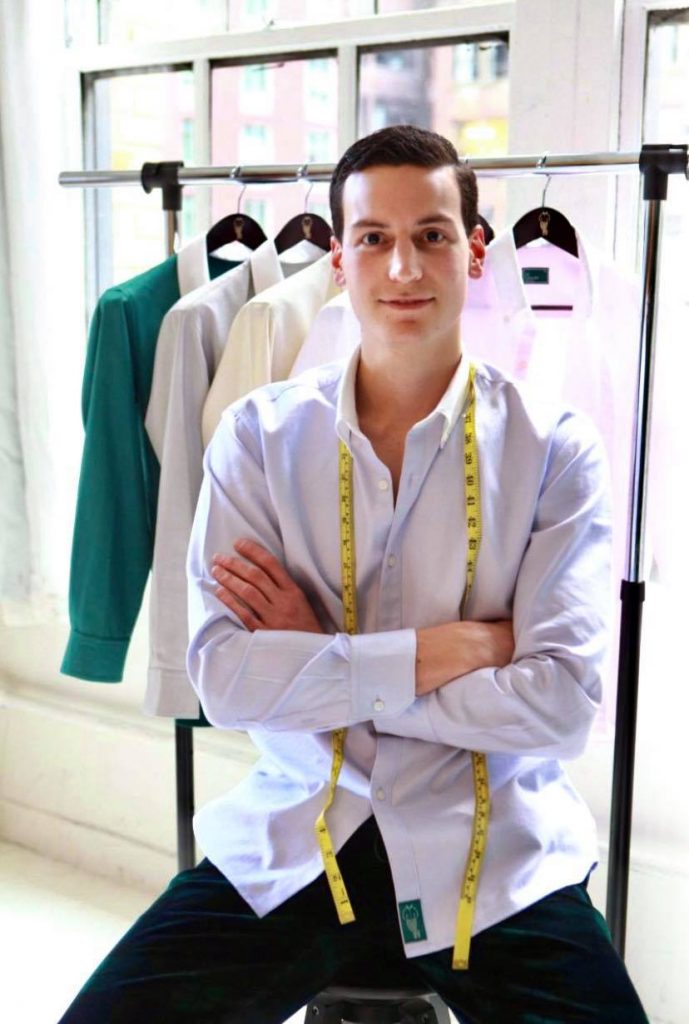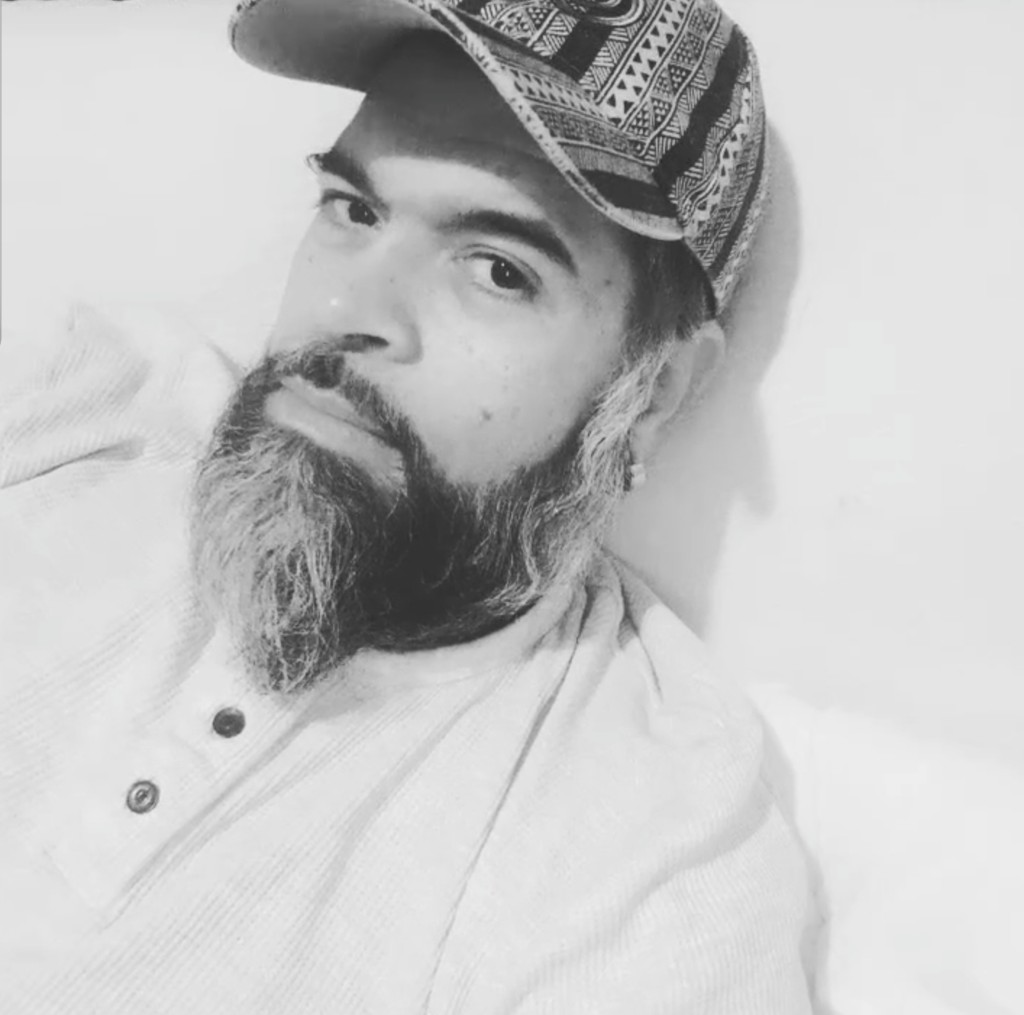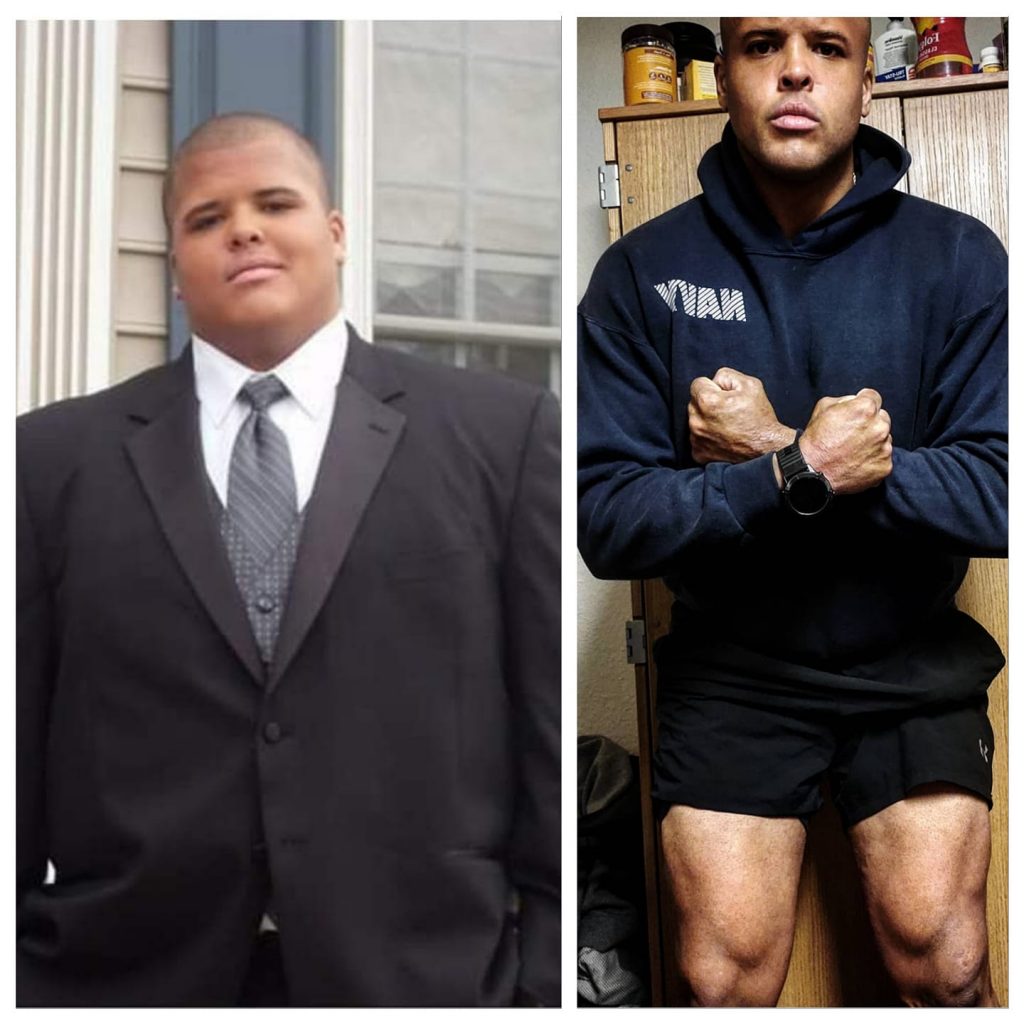When her ex-boyfriend died doing something he loved, Amanda Kay Oaks realized that she needed to continue doing what he was doing to keep his memory alive. By doing so, she became stronger and better than ever before.
TAMAR: Hi, everybody, it’s Tamara Weinberg. And today I am with Amanda K. Oaks. She is a great podcast guest. I want to give you a little bit of background about the Common Scents podcast. The common Scents podcast embodies three main themes. Number one is self-care. Number two is rising above the ashes. And number three is these unexpected, crazy career trajectories that you just would not have otherwise have ever imagined somebody’s ever doing, including yourself. Anyhow, Amanda is able to speak to two of those main themes. And I wanted you to share your story a little bit. Before we go into that I just want you to introduce yourself and tell us a little bit about who you are, and where you’re located in the world. And yeah, sure, go for it.
AMANDA KAY OAKS: All right. All right, awesome. So, my name is Amanda. I am located currently in Pittsburgh, Pennsylvania. I’m a student affair professional, higher ed structure, and also a writer. So those are pretty much my main deals. I’m also of course a runner. And that’s pretty much it.
TAMAR: So, your story and how we were able to connect. As you had mentioned you had a story where you have been, I guess influenced in some way and you had a trauma that brought you down, you had a rising above the ashes experience. So, I’m hoping to learn a little bit of about that.
AMANDA KAY OAKS: Sure, absolutely. So, this was been back in 2016. So, a few years ago. I was pretty fresh out of college and living in Cincinnati, which is my hometown. And I found out that my college boyfriend died unexpectedly while he was out on a run. And this was a pretty formative relationship. For me, it was the first sort of really, really close connection I had with another person. And the sudden loss really kind of threw me. It was the first time I had lost someone close to me, especially someone so young, who was the same age that I was. And so, I was in a pretty difficult place for some time after I found that news.
TAMAR: Right. That’s very tough. I mean, when you meet that person, I’m sure he had such an influence on your life. There is that tremendous emotional investment that you’ve put forward. And beyond that must have been very difficult. So, I’m sorry to hear that.
AMANDA KAY OAKS: Oh, yeah. These things happen in life, unfortunately. But it was quite a learning experience for me going through that and kind of having to learn how to navigate the experience of grief because everyone does it so differently. And for the first time you lose someone, you’re sort of learning what works for me, and what do other people do that works. And so, I started running a lot because he had these crazy running goals. He had just hit 500 miles and he wanted to do 700. And he never got there. So, I started running a lot. And it was sort of through that that I found what a powerful thing running can be especially in terms of healing emotionally and spiritually, I think.
TAMAR: Well, let’s talk about his goals. That’s crazy. Explain 500, 700 miles and what, a week? What’s the amount of time?
AMANDA KAY OAKS: Anything crazy, like a week. I believe it was over the year, we weren’t really closely in touch when he died, unfortunately, due to a lot of complicated circumstance, as happens between people. But he had set a goal to run 500 miles in a year. And he hit that goal very early. He died in May of 2016. So, he had hit that 500 miles halfway through the year and had set a goal to do 700. And unfortunately, he was not able to complete that.
TAMAR: But yeah, just curious a little more about like what he had been doing, what was he doing to get to that point? Was he running casually? Was he racing? Was he participating in marathons, was he participating in 5 Ks, 10 Ks, halves, 50 Ks, ultras, whatever they are?
AMANDA KAY OAKS: He was running casually, a lot of trail running. He was living in Arizona at the time, so he had a future. He said he really liked to frequent there and just doing a lot of I think so low running.
TAMAR: That’s crazy. That’s also amazing.
AMANDA KAY OAKS: Yes. Yeah.
TAMAR: Yeah, I’m thinking about the trails here. Just not very conducive for much, much trail. I mean people do it, but it’s awe inspiring to see. I’m a barefoot runner. I wear out the Vibram. However, you pronounce them FiveFingers Shoes.
AMANDA KAY OAKS: Yes.
TAMAR: I’m just trying to picture myself hitting the pavement or not even the pavement, the tree roots. And that would be kind of brutal. But at the same time, I want to do one day.
AMANDA KAY OAKS: Yeah, he was a barefoot runner as well, actually. He raced in Vibram Sir, however you say it.
TAMAR: I don’t know because I watched a lot of YouTube videos when it first started, how to put them on and everybody pronounce it wrong. So, I just don’t give myself the disclosure. I’m going to save both of them. So, it’s amazing that he was able to do that then. I’m sure the recovery was difficult for you. So, hopefully you’re comfortable elaborating on what that entailed, the length of time. I’m sure there’s an element of that grief that period. And what it potentially robbed you of. I think all of us, go through this time period in our lives, when we suffer some loss that takes us away from the joy of living. So, talk about a little bit about like that dark cloud, if that’s okay.
AMANDA KAY OAKS: Yeah. I always say that I don’t really feel like I was present for at least the next six months after I found out that he died. Grief does become this dark cloud and I was processing through a lot of guilt about the way our relationship ended and how I had ended things. And that really stole time from me in a sense that I was really depressed for a while. I remember living alone at the time, and I would be sleeping on the couch. I had to have something on in the background to fall asleep because I would be going through these guilty thoughts and this sadness. And I happened to be just ending a period of my life. So, it was a lot of endings. I was serving in AmeriCorps, and my contract was almost up. And I was not up for any new more renewals. I was also considering going to grad school. And it was a huge period of transition. So, within the span of a few months I lost this person that had once meant so much to me. And then I lost my entire life in a sense because I packed up and I moved away from Cincinnati where my family is to a new city, Pittsburgh, where I didn’t know anyone. And it was quite an interesting adjustment being this very new and raw version of myself, trying to navigate these new people and this place. I did a few crazy things as one does. I got on a Greyhound bus and went to Idaho to visit my childhood friend who was living out in Idaho. And I just felt like I needed to be somewhere far away. And we hiked and camped. And that really helped a lot. I think that was when I finally started to feel a little bit present in my life and in myself again. I think it took probably a year or so getting through all of those firsts for me to really start to feel I had learned how to live with grief. I think there’s this expectation, especially if you haven’t lost someone before that you grieve. Grief is this finite thing and you move through it in these steps or whatever, and then it’s over. And it sort of took a while for me to learn that that’s not really how it works. You sort of learn to be with it and that another relationship comes into your life that’s always changing.
TAMAR: So, what I am gathering, when you start thinking about loss in general, that’s when psychologically they actually have this chart, like the mat, the big stressors in your life, the things that could make the most impact on you. Losing a person is among the worst things that could happen to you. But in your situation, you lost the person who was close to you. Changing a job is also one of the top ones because it could be a good change. It could be a bad change. Getting fired, I think is another one. So, like getting fired or losing your job, changing your career, and moving are amongst the top. So, you had I guess those four things.
AMANDA KAY OAKS: Yeah, it’s a big time in my life.
TAMAR: You’re here and you’re here talking to me. So, I have to say that it’s an honor and a privilege.
AMANDA KAY OAKS: Oh, thank you.
TAMAR: So, yeah, that must have been very difficult. But at the same time, you were able to pull through it, you were able to do something. I guess that was against the grain for what you were doing. I mean, from Pittsburgh to Idaho. Definitely, it must have been a community. So, yeah, I assume you probably had done beyond other things that brought you to that element of presence that you described. Do you want to talk a little bit about what that looked like in your recovery?
AMANDA KAY OAKS: Yeah, absolutely. I mean, the first thing was that I finally started seeing a grief counselor while I was in Cincinnati. She really sort of helped me think about the ways that mindfulness can help. And I kept thinking about how I didn’t know how to greet you. Like that this big thing that I got stuck on of, I don’t know how to grieve someone. And Nathan was very religious, and I was not. And that was sort of one of the reasons. And so, I was like, “Well, he has this map, and his family has this map how to process it. What do I do?” So, I sort of discovered mindfulness through talking to my therapist. I started just getting out and going on long walks again, and just trying to kind of ground myself in the present moment instead of spiraling out into all of these worries and this guilt. I started writing a lot. I moved to Pittsburgh. I came here to do an MFA in creative writing. So, I originally planned a completely different project. I was accepted into the program on completely different project. But of course, I got here after that loss. And all I did was write about the relationship and loss and sort of mapping my way through that. And that really helped just processing everything on the page. And then of course going to workshop with my classmates and talking it through with them. Creating art out of that loss was really helpful; I think was probably one of the biggest things. Also, running and getting back out there and sort of feeling that was a way to honor the memory of what he was doing. But also, again, a way to be present in my body and feeling of being alive and present and focused on now.
TAMAR: So cool. So, tell me, I’m going to turn this into you being an educator for a moment, if you have any advice for other individuals in terms of getting into that element of mindfulness. I am one of those people who do run but I’m also really a beginner. I talk about this pretty often in the sense that I’ve only done a few 5 Ks and it was about a year ago. I only started December 24, 2018 and I barely do much. But right now, my goal in 2020 was to start meditating every single day. I started the first time I listened to the meditation stuff on Calm and Headspace. I used all those services. And they basically say, “Oh, don’t worry, everything’s fine. You get back, you get your mind back in the focus.” I finally found one. It’s called How to Meditate. And it’s relatively useful in the sense that you redirect your thoughts. The whole idea is basically to just remember to realize that your mind is wandering and getting your mind back into this focus of nothingness or focusing on your home base or your breath or whatever sound around you. I’m still in the middle of it. So, it’s what I struggle with. It’s something that I want to commit at least 10 to 15 minutes a day doing. At the same time, it’s hard as heck. So, if you have advice on your specific mindfulness journey to teach others to do the same thing, what would you do?
AMANDA KAY OAKS: I think the first thing I would say is you have to find what works for you. There’s a pretty well-known YouTube yoga teacher, Adriene Mishler. I have had yoga with Adriene and her sort of mantra is “Find what feels good.” And I think that’s something that I’ve really adopted and would encourage people to adopt. But mindfulness is sort of a more general term and it doesn’t have to be that meditation on the mat if that doesn’t work for you, and it doesn’t have to look like anybody else’s version. It’s whatever is going to help you be present in the moment. So, for me sitting and meditating work sometimes but a lot of times it’s better to just go for a walk and sort of notice everything I see there. I really like to do yoga and that really helps me but I know people for whom yoga doesn’t work. So that the whole idea of finding what feels good and being gentle and willing to try new things would be my number one piece of advice. Cool.
TAMAR: So, I want to hear a little more about your running journey. So, you suffered this loss. Where were you running? How much were you running during that time? How much have you done beyond that? What have you done? Are you racing? Or are you just running to run? I’m running to run. And people always say to me, “I wouldn’t run if I didn’t have a goal.” So, I have weight loss specific objectives. I don’t have a goal. I mean, it’d be nice to have some 5 Ks because it’s the only thing I’m thinking about right now. Everything else terrifies me.
AMANDA KAY OAKS: Yeah, running. And I sort of had an on again, off again, relationship. For a long time, I had a friend in college who started running and we ran a 5 K together. I mean, she ran the 5 K and I walked most of it after realizing I couldn’t even run a mile. But then something about that atmosphere really stuck with me, the people cheering. I had never been to a 5 K before. So, I would take up running and then sort of haul off when it got cold or when I got tired for quite a few years. So, I was sort of running when Nathan died. But I think the fact that he died while running sort of sparked me to want to run more. And so, I was running some while I was grieving. I mean, the first few weeks I was crying on the couch. And that was what I was doing with my time. But after I started kind of working with my therapist and trying to pick myself back up again, I was running three miles I think by the end of it. But just so whatever I could do, and it was really just running to run. I ran a few 5 K fun runs like the color run. Since then I made it a goal to really stick to running back in 2018. It was the first New Year’s resolution I ever stuck with. And I ran my first 10 K that year. And then my second 10 K that year because the first one went very badly. It was very cold and I ended up walking most of it. But since then I’ve set the goal of running a half marathon. Last year, I had some injuries and things so I didn’t get to do it. But I’m training again for a half marathon hopefully this year. So, kind of a little bit of both running around and running for goals.
TAMAR: Right. Awesome. So how would you advise? Or rather, in your experience, how have you as a beginner worked your way up to this type of regimen? What has been your training regimen? You’re kind of running the three miles here and there. Are you following any specific program? Are you doing anything in particular? I assume in Pittsburgh; you probably have hills? How are you doing treadmill outdoors? How do you mix it up? How do you do all that?
AMANDA KAY OAKS: Yes. So right now, I am following a specific training plan. I discovered that training plans were a thing that existed when I ran my first 10 K. So, I am following the Run Your First Half Marathon training plan by Kelly Roberts. She’s sort of a big running personality. She has a blog and started a fitness movement called the Badass Lady Gang. I’m following her plan which I’m really liking. It has been doing a lot of stuff I hadn’t done before, like speed work, which is where you sort of try to hit a goal pace at a certain time. I was very convinced I would never run faster than an 11-minute 32nd miles, and within a few weeks, I was running more like 10-minute 32nd miles, which was amazing. So, I’m doing a little bit of more outdoors now than I used to and then some treadmill and it’s super icy. I don’t trust myself. I’m very clumsy. So, I’ll run on the treadmill rather than risk ice. But that’s sort of the mixture that I’m doing.
TAMAR: Yeah, I would not resize either. And the people have said and I’ve seen online, people are like, “I want to run. There’s ice outside.” And the suggestion is put some nails in your shoe and just do it. I don’t know about that. I don’t want to risk it. They have these Yaktrax products that I’ve used to prevent myself from falling on the black ice, but I don’t think that would be good enough.
AMANDA KAY OAKS: Yeah, I fell down my first winter in Pittsburgh. I fell down like three times on the ice and I hurt myself luckily minorly but ever since then, I’ve been like running on the ice. It’s just not a thing that I have the balance for.
TAMAR: I don’t. It’s funny because in Edmonton, I think it was negative 36 degrees Fahrenheit which is also like 36 degrees Celsius, which is what happens once we hit the negatives. And this past weekend in New York where I live, it was 64 degrees Fahrenheit. And I was just like, “Yes! No ice!” It’s been a while, but I went outside and I ran four miles which is probably my longest time, which was really cool. I would love to say that a half is my not a half. But a 10 K is in my future. Maybe, if I’m able to maintain this, I can say that the answer is yes. But right now, my miles are slow, was associating my shoe – actually had a hole in it. So, when you have a hole in your FiveFingers shoes, your five fingers skin is hitting the pavement each time. And yeah, it felt like there was a nail going through my toe. And I kept trying to touch it and trying to stop without actually stopping. And I couldn’t feel anything there. And then toward the end, instead of feeling I thought there was actually something in my shoe. I ended up looking at my hand and there was blood all over my fingers. Oh, crap. Anyhow, long story short, that was about a 13, 1350 mile but sometimes when I’m racing, it’s usually about 12, 12 and- a- half. But maybe I’ll have to integrate a little more speed work right now. My thing is that I don’t have these specific goals. I don’t really integrate the trainings in the right way. But it’s interesting to see what other people are doing because I need to start thinking about that if I have longer term goals, and maybe I should be setting myself up for those.
AMANDA KAY OAKS: Yeah. For me, when I decided I wanted to become a runner, setting a goal helped me because I was like, “Okay, now I’m training for this specific thing.” So, it’s not running just because I want to or when I feel like it, but running for this goal. So, it helps. But I keep saying everyone’s different. So not everybody has to have those goals, necessarily. But I find it really, really fun to work towards something.
TAMAR: Right. And I’ve been listening and I read a tremendous amount of material when it comes to this kind of realizing yourself, your authenticity, realizing your destiny, and what you’re supposed to be doing on this planet. And people, ever the self-help gurus and all the people who are involved in this space, they all pretty much say, run. They all say have a goal. And make sure you work toward that goal. Because if you don’t have a goal, you’re not going to I guess, running. Because I just can’t. I listen to self-help, listen to music all the time. But when I run, I have a specific podcast. Not just a podcast, but an artist that I listened to. It’s called Fearless Motivation. And it’s literally having these self-help gurus screaming in your ear and giving you this constant positive reinforcement, motivation to do things. And the other day, that was exactly what they were saying. If you don’t have a goal, you’re not going to get there. It’s usually positive, but that’s a negative. Yeah, that’s a little bit of a negative stuff that they kind of say, but it’s all about the positivity. And I can’t wrap my head around it right now. It’s so weird. I think my goal is ultimately to make sure I’m doing it every single day.
AMANDA KAY OAKS: Yeah.
TAMAR: So that’s my goal. I don’t really have any self-help distance type of goal. But my goal is to actually make sure it gets done.
AMANDA KAY OAKS: Yeah. Sometimes that’s enough.
TAMAR: Yeah. And it’s funny that I just had this revelation here. So yeah, it’s going to be 50 degrees tomorrow. So, I might actually go outside and make something happen. Unless I’m sore from working out at the gym today, we’ll find out.
AMANDA KAY OAKS: Yes.
TAMAR: But anyhow, talk a little bit more about what you’ve been doing. I think self-care is a big part of who we are to realize our best selves, to be happy with ourselves and know something that we need to do in order to nurture our psyches. So, tell me a little bit about besides running. I assume that your self-care, probably you are able to cater to that in some way. Like, for example, your venture to Idaho. Tell me a little bit of that. Those things that you might be doing?
AMANDA KAY OAKS: Sure. So, in addition to running, I do yoga right now. Feels like everybody is doing right now yoga with Adriene’s 30-day yoga journey. So, every year for the past five years in January, I do that 30 Days of Yoga to kind of kickstart the year and that’s a big self-care thing to me because it’s my own holiday tradition. So that’s huge. Yoga is very important for me. I would love to say that I journal self-care. Sometimes I try to have a gratitude practice that gets written down. It doesn’t always happen. But that’s part of the journey. Especially when I need to pick myself back up, I’ll start just noticing things and writing down things that I’m grateful for, especially on days when it feels like there’s nothing to be grateful for. I also like, kind of what you typically see, the Instagram self-care. I love a good bathroom, I love a good face mask, that type of thing of just feeling like I’m taking care of my physical body in a different way that’s not necessarily running and working out or doing yoga and that type of thing. It’s also just learning new things. I think, when I graduated college, I sort of had an existential crisis, because I’d always been this high achieving student, and suddenly, no one was handing me a syllabus anymore. So, I started just finding things I wanted to learn and learning new things. The most recent thing has been I’ve taught myself to cross stitch. So that’s been fun, finding new hobbies and new ways to kind of keep learning and growing as a person.
TAMAR: Very cool. So, I want to talk about your Instagrammable life there. I think it’s funny because I read it all and that’s how they see it. Everything is made for the Instagram generation. So, in terms of the self-care movement for myself, the inspiration and the impetus for this particular podcast is that I went through a trauma. And I was in a bad place for quite a while. I had also been going, I wasn’t even aware at the time until I pretty much pulled myself out of it, that I probably was going through about a decade. Not even kidding, I have postpartum depression. And then I had a trauma that knocked me down. And then I needed something to bring me up. Then I was able to look back and reflect on the previous years and realize that I wasn’t happy for many years before this even happened, before the things that came into my life that caused that trauma. So, the thing that brought me into a happier state was fragrance, which is the weirdest thing at the same time. It’s not so Instagrammable yet. It was just one day I decided wearing every single day yoga pants, yoga sleep pants, whatever you’d call them. I had five pairs of them, and a sweatshirt. I wore socks and pink Crocs, and that was my wardrobe for years while I was depressed. And after the trauma, one day decided to kind of wear something else. But it wasn’t even prompted by that. I decided we were going to go out and we’re going to do something a little bit different. And I found a vial of perfume in the back of a cabinet and I had worn it before it wasn’t anything that was unknown to me. And for some reason, because when you’re in this bad place, you’re not doing anything for other people, you’re really kind of doing things for yourself. And putting on fragrance that one day, that one moment, was life changing for me. It was the weirdest thing; I can’t articulate what happened to me at that moment. But I said to myself that is what I’m going to be doing in my life. I need to work with personal fragrance. I’m a tech person; just the whole career trajectory like changed there. I’m a tech person who decided I’m going to start a frickin sprints. So, I hear you, I hear about this necessity for relaxation. I hadn’t been doing it for years and all of a sudden I see the importance of the application of perfume and having that mindset throughout the day of “I’m doing this for me. I love who I am and I accept my true self to then bringing that forward into the world.” I mean that’s where I am and became a sedentary. I have a very negative phrase to describe myself, a sedentary. I’m not going to say sedentary, just put any word to put in in the blank there. And now I’m running and getting up off of my button. I’m wearing Crocs and socks less frequently. So yeah, I think it’s really important for us to focus on those things that make us feel good but especially in the case then and that’s why I’m latching on to the concept here of things that smell amazing because I think through this experience of scents, at least this had been my specific case, you can find a substantial amount of happiness and hopefully that will propel you to continue seeking it.
AMANDA KAY OAKS: Yeah, definitely.
TAMAR: Cool. Okay, so I have one final question. I think I will probably ask you, and it’s going to be a big one. And hopefully you’ll have a good answer for me. But okay, challenge question. If you can give your earlier, younger self some advice, what would you tell her?
AMANDA KAY OAKS: Oh, that is a good question. Think I would tell her it’s not the end of the world until I it’s the end of the world. It’s going to be okay.
TAMAR: Yeah, I identify with that. Yeah, you never realize that there will be a tomorrow and eventually those tomorrows won’t be as tough as they used to be.
AMANDA KAY OAKS: Yeah, exactly. I think probably the biggest shift in who I was before. That experience of grief and after is just the ability to sort of process a dramatic change and loss. I think, anything that huge happened to you really does feel like that thing is the end of the world. And you’re learning that you actually can learn to live even if it doesn’t feel that way right now. Like pretty tomorrows, much anything that life hits you with. You can move on from or move on with. I should say, I don’t think we move on from things but move on with them.
TAMAR: Yeah, that’s totally valid. It’s interesting because you’re feeling as low as you feel. People don’t even recognize that there’s really nowhere else to go but up. Yeah. Cool. Well, thank you so much, Amanda. I really appreciate your taking the time to share your vulnerabilities with me and your experiences. I hope you keep on running and I hope we keep on running. Maybe we’ll run into each other one day.
AMANDA KAY OAKS: Yes. Thank you for having me.
Podcast: Play in new window | Download (Duration: 32:25 — 29.4MB)
Subscribe: RSS

